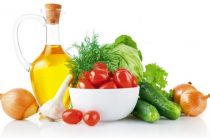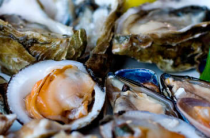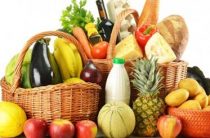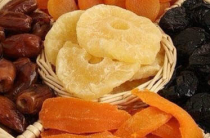Unfortunately, many children today suffer from allergies. It occurs due to various reasons. But the main one is a weakened immune system. And here comes a very difficult task for parents - to explain to the baby that many of his favorite foods must be abandoned. Indeed, for a complete cure, an indisputable condition is the observance of a strict diet.
What causes allergies in children?
In infancy, allergies are passed on to the baby through mother's milk. And here it is important for the mother to identify the allergen product and exclude it from her diet. Genetic predisposition plays a big role. If during the period of bearing the baby, the mother suffered from any type of allergy , then the likelihood of the baby getting sick increases. The reason can also be too early feeding of the child with dry mixes and cereals. Moreover, in this case, the allergy may not manifest itself immediately, but even after a few weeks or months.
The abuse of cow's milk and a variety of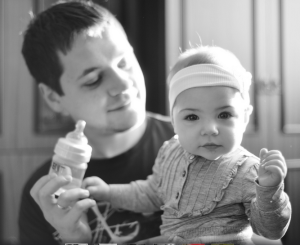 citrus fruits often provokes food allergies in children. Vegetables such as potatoes, tomatoes, bell peppers and zucchini also fall under this comb. The disease also appears against the background of intestinal dysbacteriosis. A very important role is played by the mental state of the baby, his feeling of being in the family, being in stressful situations.
citrus fruits often provokes food allergies in children. Vegetables such as potatoes, tomatoes, bell peppers and zucchini also fall under this comb. The disease also appears against the background of intestinal dysbacteriosis. A very important role is played by the mental state of the baby, his feeling of being in the family, being in stressful situations.
The appearance of an allergy in your child may indicate hormonal disorders in his body. So the first thing to do is to see a doctor. Manifestations of hay fever or bronchial asthma are caused by smoking parents, or finding the baby in a room where they smoke. Even just the smell of nicotine can become a provocateur.
Since the child's body is not yet fully formed, its immune system is weak enough to deal with many irritants. This factor greatly affects its ability to deal with allergens on its own. The precursor of allergy is considered children's diathesis, which occurs in 90% of babies. Incorrectly selected hygiene products for the care of a newborn and his clothes often cause allergic reactions in the form of dermatitis and rhinitis.
How does she present herself?
The following allergy symptoms are common among children:
- Dermatitis. Often occurs against the background of the use of allergens in food. The disease is chronic. Dermatitis often looks like papules, cracks, peeling of the skin. Always accompanied by intense itching.
- Hives. It is characterized by rashes in the form of small red pimples on any part of the body. It manifests itself from the first minutes after contact with the allergen. Occurs after the use of many foodstuffs, medicines, contacts with animals, plants, dust. Urticaria can develop into a rash in the form of blisters and be accompanied by pain in the abdomen, dizziness.
- Respiratory manifestations. These include rhinitis, conjunctivitis and cough. Characteristic features are nasal congestion, lacrimation, coughing fits. The cough is usually dry, without sputum production. Seizures come at night.
How to choose the right menu for a child?
The selection of a hypoallergenic diet for your baby can rightly be called a real torture and test. A fairly large number of products are prohibited for use even by healthy children, not to mention allergy sufferers. Food for allergies in children should be sufficiently balanced and rich in vitamins. Let's try to figure out with you which products are allowed, which ones should be excluded.
Meat dishes
If your child loves meat dishes, then for their preparation it is better to use the following types of it:
- Turkey;
- Rabbit;
- Veal;
- Lean lean pork.
It can be various steam cutlets and pancakes, meatballs. You can make a light drizzle of minced meat using a small amount of olive oil. This meat is suitable for making meatballs. When cooking meat broth, all the same, it is worth draining it three times to eliminate all possible allergens.
Bread and cereals
In this regard, children have more restrictions. It is allowed to eat only Darnitsky gray bread and crispbreads without various flavorings. A common type of allergy is wheat allergy. Therefore, it is strictly forbidden to eat any dishes and products in which it is included. It is worth noting that in the presence of this type of disease, the use of semolina and pasta is also prohibited.
Cereals and cereals
Among the cereals, the following are considered permitted:
| Oatmeal | Millet | Buckwheat | pea |
| Rice porrige | Corn grits | Shredded beans | Rice and wheat porridge Nestle |
You can cook these cereals in any form: salty, sweet, dairy. But it is better to use soy milk, and fructose instead of sugar. Steamed or oven-cooked porridges are very useful. They go well with meat dishes from the list of hypoallergenic meats. Fresh peas are advised to freeze for the winter and cook soups based on it. Chickpeas have a sufficient amount of vitamins. It is crushed in a blender, boiled and minced meat is added. The kids love this dish. And with the help of rice, you can cook lazy cabbage rolls. Your imagination has no limits here.
Eating vegetables
Check out the following list of vegetables. They are approved for use by children with allergies:
| Cucumber | Celery | Greenery |
| Broccoli | soaked potatoes | Brussels sprouts |
| Bulb onions | Zucchini | Green onion |
| Cauliflower | Squash and parsnips | White cabbage |
It will be very useful to prepare a stew from these vegetables. To preserve all the useful elements and vitamins, steam vegetables. Many mothers bake vegetables in the oven in the form of casseroles for their babies. You can add minced rabbit or turkey to them. Soak potatoes overnight in plain water before making mashed potatoes. This will remove all the starch, which is often the cause of food allergies. For first courses, vegetable broths are very common. And from baked potatoes with minced meat, your child will simply lick his fingers.
What fruits and berries are allowed?
Of course, most fruits are banned, but not all. During periods of exacerbation of allergies, children should consume these fruits only in their season. Allowed:
- Yellow plum;
- Green apples and pears;
- White cherry;
- White currant.
What can you drink with allergies?
During the course and manifestation of the disease, you can give your baby purified non-carbonated water, you can brew non-concentrated green tea without flavorings or berry additives. White tea is considered the safest for children. Moms can cook compotes from fruits and years, which are not prohibited.
Cottage cheese and eggs: is it possible or not?
Cottage cheese is a fairly powerful allergen. Of the internal manifestations, cottage cheese provokes nausea, vomiting, diarrhea, spasms of the gastrointestinal tract, swelling of the mucous membranes of the nasopharynx. This is a dangerous product - at first it can cause coughing and tearing of the eyes, and then asthma attacks will come. Cottage cheese is introduced into complementary foods with extreme caution, and it is better not to give it to allergic children. It is also forbidden in casseroles and pies.
As for eggs, there are fewer prohibitions. The protein in the egg is the allergen. It is he who can cause symptoms. With prolonged heat treatment, allergens lose their properties, so it is necessary to boil eggs for up to 15 minutes. And, of course, give the child only the yolk.
If you have a question about what kind of oil you can cook with, then everything is simple: it is allowed to use three types of oils - linseed, olive and sesame. They are not just anti-allergic, but also have a huge number of useful properties and components.
Carrot and pumpkin: pros and cons
 No one doubts the usefulness of these products. In terms of their vitamin content, these vegetables make up the lion's share of all the others. But what if the child suffers from allergies? Carrots and pumpkin are classified as allergens, many nutritionists prohibit them. These cultures have cross-reactions with many types of allergies. Therefore, if you do not know what causes your child to have reactions, you should not give them. After eating carrots, a child may experience gastrointestinal disorders, nasal congestion, inflammation of the mucous membranes of the eyes, jaundice, bouts of sneezing and dry cough. These same symptoms occur after eating pumpkin.
No one doubts the usefulness of these products. In terms of their vitamin content, these vegetables make up the lion's share of all the others. But what if the child suffers from allergies? Carrots and pumpkin are classified as allergens, many nutritionists prohibit them. These cultures have cross-reactions with many types of allergies. Therefore, if you do not know what causes your child to have reactions, you should not give them. After eating carrots, a child may experience gastrointestinal disorders, nasal congestion, inflammation of the mucous membranes of the eyes, jaundice, bouts of sneezing and dry cough. These same symptoms occur after eating pumpkin.
Keep track of how much your baby eats these foods. Food allergies often appear from an excess of orange-colored vegetables and fruits in the body. It is better, all the same, to give up such products for a while, and they are generally not suitable for the first complementary foods.
What about fish products?
Fish allergies are less common in children. However, it still needs to be used with caution. For example, if the baby suffers from pollinosis or bronchial asthma, shortness of breath and suffocation will appear after its use, which can lead to anaphylactic shock. If in childhood you “earn” yourself an allergy to fish and seafood, then it is impossible to get rid of it, it will become a companion for life. The only type of fish that is 100% allowed for all children is tuna. But for its preparation, there must be a separate dish that does not contain residues and even smells of another type of fish.
Strictly prohibited products
|
|
|
Nutrition for allergies in children to pollen
If your child suffers from such a disease, limit him to the following products:
| Allergy to quinoa and ragweed pollen |
|
| Allergy to grass pollen |
|
| Allergy to birch pollen |
|
| Allergy to poplar fluff |
|
Prepare food for the child yourself and categorically refuse semi-finished products. Try to cook only fresh food, do not leave portions for the next day. Cook milk porridge more often. Do not use food with a long shelf life for cooking. You also need to completely eliminate tomatoes from the diet. And give up bread for a while.
Baby diet for food allergies
In this case, there are quite a lot of restrictions on the consumption of certain products. Babies are very often allergic to cow's milk due to feeding too early. Moms need to replace cow's milk with goat's milk, and preferably with soy. It is quite hypoallergenic and contains quite a few useful trace elements. All milk-containing products should also be excluded from the child's diet. I suggest that you familiarize yourself with the prohibited foods for food allergies:
| Allergy to seafood |
|
| Allergy to cereals |
|
| Allergy milk |
|
| Allergy to potatoes |
|
Sample menu for a child
- Menu number 1. For breakfast, it will be useful to cook barley porridge and minced turkey meatballs. Brew your child with weak green tea. A weak, triple-drained rabbit broth with vegetables is perfect. A small portion of fresh cabbage salad will not hurt. For an afternoon snack, give your child fresh green apples or one pear. Dinner should be light. Oatmeal will do.
- Menu number 2. For breakfast, buckwheat porridge, 2 yolks of boiled eggs and a steam cutlet. For lunch, pea and turkey soup, vegetable pancakes and fresh juice will be good. For a snack, weak tea and biscuit cookies are suitable. For dinner, a piece of boiled fish (tuna), carrot and cabbage salad, tea.
It must be remembered that breakfast should start at 8 am, lunch at 12:00, and dinner no later than 19:00. Try to feed your baby at the same time every day.
Some Tips
- Make sure your child doesn't overeat.
- Give him as little protein food as possible.
- Saturate your child's diet with vitamins.
- Try to cook everything by steaming or boiling.
- Limit your baby from eating sour, sweet and salty foods.
- Diversify your menu as much as possible.
